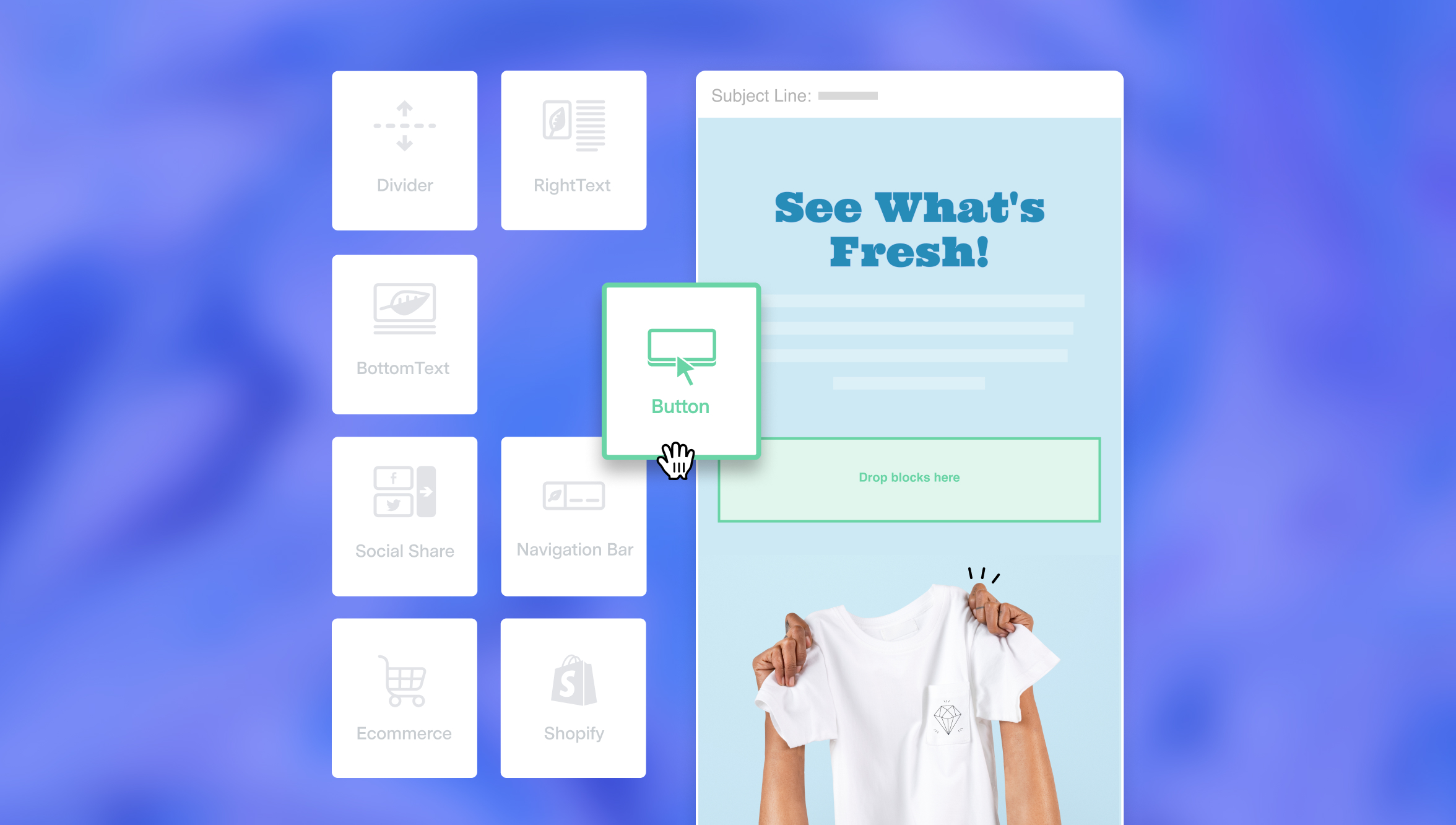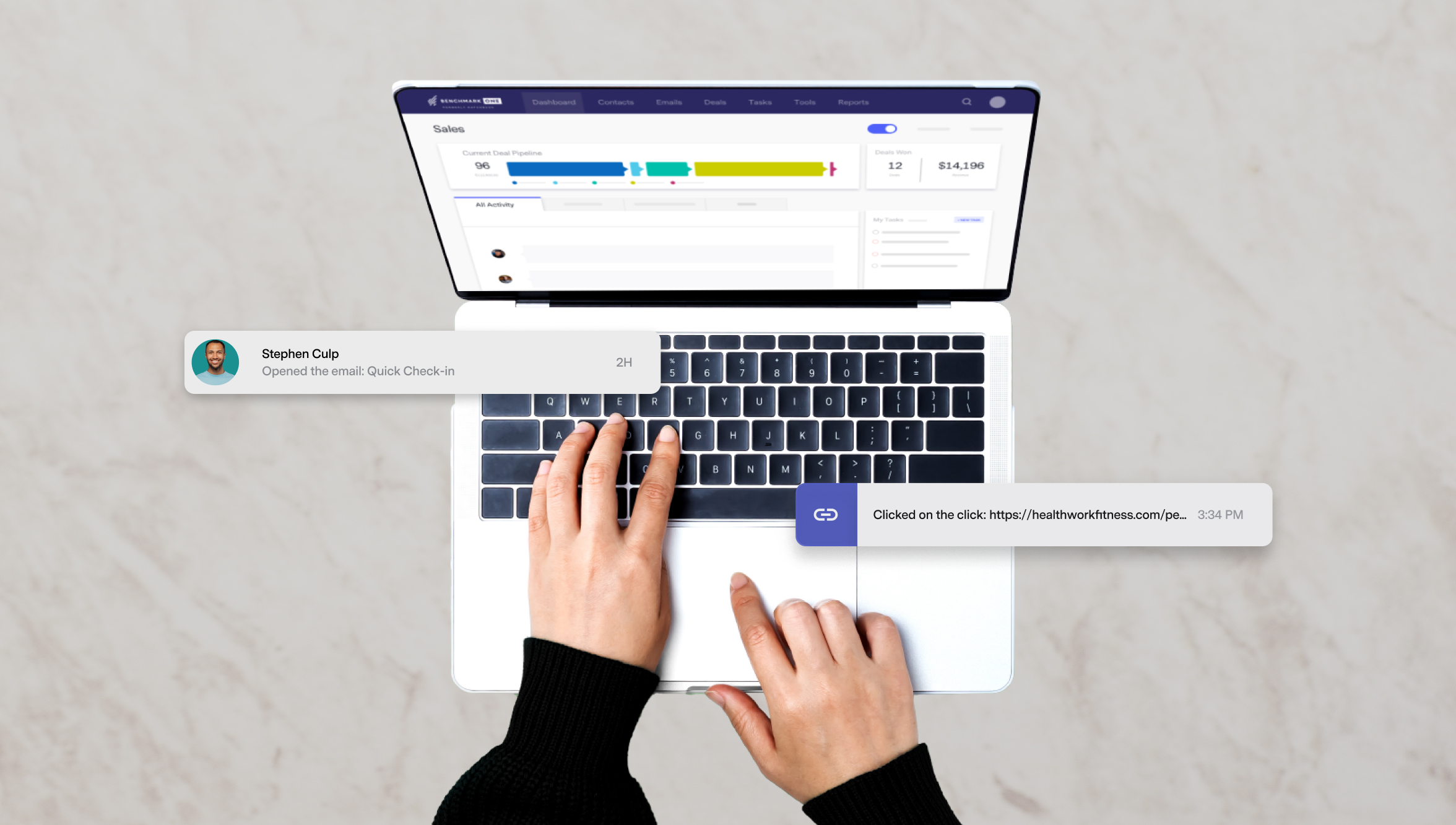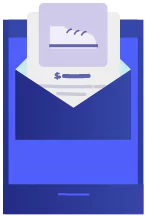Table of Contents
platform and send your first 
Choosing the Best Email Marketing Software for Your Business

A successful email marketing strategy takes resources, dedication, and the right email tools. With the best email service provider for your business, your marketing team can put your email marketing plan into motion.
More than that, the right email marketing service will give you insights and provide key findings that allow you and your team to refine your strategy. After all, when it comes to email marketing, complacency can kill performance.
In this guide, we’ll help you discover what email marketing software is, why it’s beneficial for your strategy, and what features will help you take your email strategy from good to great.
What is Email Marketing Software?

Email marketing software is a tool that enables you to easily send messages to your email subscribers. Through triggers and automation, you’re able to facilitate regular email nurture campaigns and send newsletters to your list of leads, providing them with valuable information, resources, and content.
Just think, without email marketing tools, you’d have to manually reach out to all of your leads, create emails on the fly, and hope for the best. You wouldn’t be able to track how your emails perform or whether or not they were resulting in any desired action. Performing basic marketing and sales outreach, while also managing the rest of your responsibilities, just isn’t doable without email marketing tools of some kind.
Why Does Finding the Right Email Marketing Software Matter?

Email marketing is still super effective when it comes to driving sales for your business. But not just any email marketing tools will do. The best email marketing services will help you achieve the following:
Create Efficiencies

As we touched on previously, email marketing software is extremely efficient.
As we touched on previously, email marketing software is extremely efficient. Marketers and sales teams are responsible for some of the most important aspects of a thriving business: bringing in leads and nurturing them until they purchase. That requires a lot of time and energy, but you can’t give those efforts the attention they deserve if you’re too busy putting together tons of emails and manually sorting through your email list.
Your email marketing software is one of the most powerful tools in your marketer's tool belt. It allows you to plan and set your emails up on the front end and then set your automations so your emails deploy at optimal times. You don’t have to personally track your site visitors and leads to determine where they are in the buyer’s journey, or what the right time to reach out to them may
Simplify Outreach
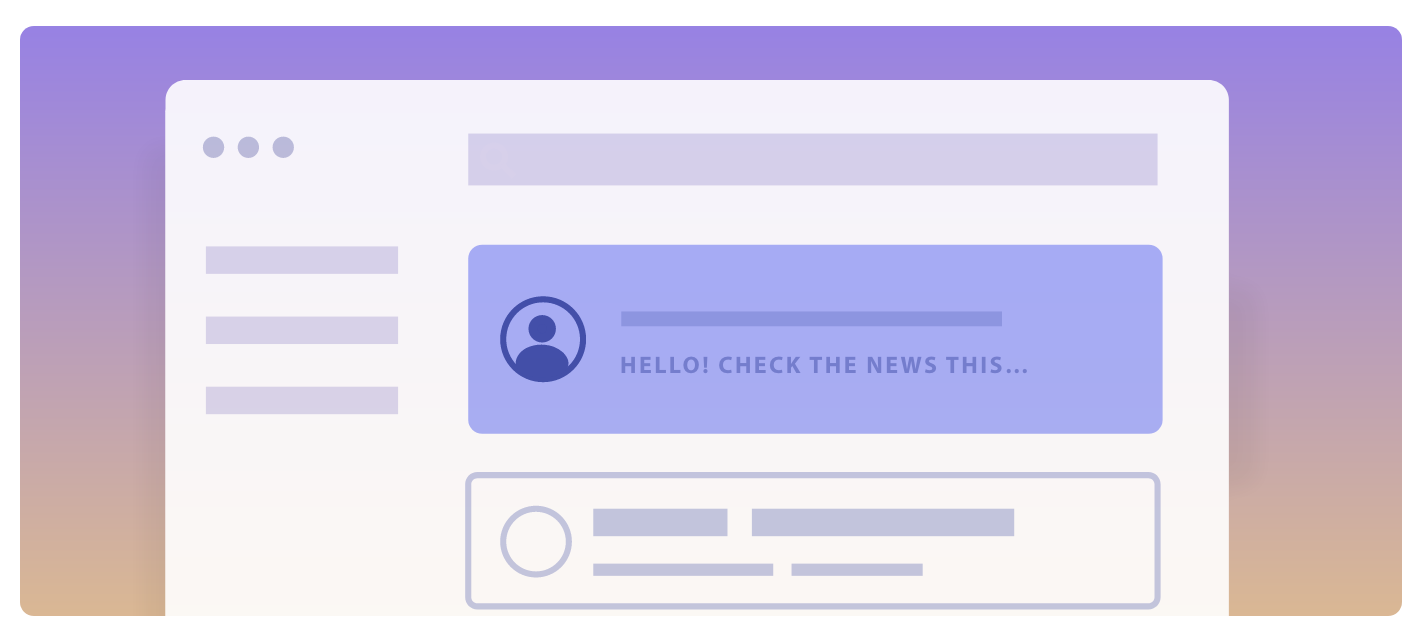
One of the biggest struggles with marketing and sales efforts is reaching your prospects directly and engaging with them in a meaningful way.
Sure, you can send out targeted ad campaigns and write guest content in publications your audience base reads, but there’s no guarantee that you’re actually reaching people who will make a purchase.
Email marketing tools provide you with the necessary components to reach your prospects and subscribers quickly and easily. You’re able to send a direct line to them by entering their inboxes with compelling offers and personalized content. And even if they aren’t ready to buy right away, your email marketing software helps you stay at the tops of their minds so they think of you when they are ready.
Track the Performance of Your Emails

Email marketing today means no more guessing about if your emails land well with your recipients.
Your email marketing software breaks down important performance metrics, like open rate, click-through rate, unsubscribes, and bounce rate so you can see how well you’re doing.
These email marketing metrics can be compared against your goals to determine what you’re doing well, and what needs to be improved.
Organize and Prioritize Leads Through Segmentation

Most seasoned marketers understand that different leads require different kinds of content and resources. Lead preferences depend on numerous factors, including:
- The industry they’re in
- Where they are in the buyer’s journey
- Their knowledge of what it is your company does
- Their specific needs and problems
Differentiating your leads based on these factors, and whatever qualifiers make sense for your company, will allow you to connect them to the right kind of resources. By showing your leads that you’re the type of company that can provide them with personalized resources, you’re also showing them that you’re reliable, can be trusted, and know exactly what they need. These are all great foundational pillars for building a long-lasting partnership.
When you’re able to segment your leads, you have a simpler way of identifying those that are more likely to buy your product or sign up for your service offering. This means you can prioritize those more qualified leads, target them with direct email communication, and capitalize on their readiness to buy.
Most email marketing tools out there provide you with a simple way for segmenting your list based on qualifiers, performance patterns, content interaction, or other preferred lead qualifiers. You could do a ton of digging to determine what each individual lead wants, but you still wouldn’t be able to uncover what you can and use it as efficiently as you could with email automation software.
Personalize Every Send

We all know that personalized content is crucial for resonating with your leads and converting them to customers successfully. So, to piggyback off of the last point, segmentation means users can send applicable, personalized content more easily.
Sending personalized content would be nearly impossible without the ability to automatically segment your leads. And as previously stated, you could try, but you wouldn’t be very successful applying a manual approach to segmentation.
Fuel a Lead Nurture Strategy

Lead nurture comes after you attract and generate your leads, and it’s at the center of an effective inbound marketing funnel. Nurture is achieved through personalization.
So, when you send your leads content that educates them, they’re able to make more informed decisions pertaining to your product. It’s also effective at building trust, which we know is crucial in converting leads to customers.
Increase Conversions

When Zapier started implementing automated email marketing, their conversion rate increased by 86%.
Teaming the power of segmentation and personalization with email marketing software can prove to be a powerful concoction. One that not only helps you manage and nurture your leads, but that also results in increased conversions and ROI.
What are the Most Important Email Marketing Software Features?

When you find an email marketing software that provides you with exactly what you need, there’s nothing better.
The right tool should feel like hiring your own marketing assistant - providing an additional set of hands helping you get things done and giving you the data that improves decision-making.
Here are some features you should look for in helpful and efficient email marketing tools.
Email Builder

It’s probably a given that your email marketing software should have an email builder.
Knowing your skill level can help you choose the right platform, whether you're an email marketing newbie that needs a simple drag & drop builder, or an email marketing geek who loves to hand-code every email send. It’s crucial that your email builder is easy to use and customizable so you don’t have to waste too much time putting your emails together.
At Benchmark Email, we have a drag and drop email builder that allows users to create emails in various formats and layouts. Adding images and text blocks is a breeze and if you decide to scrap your idea, starting over takes only seconds.
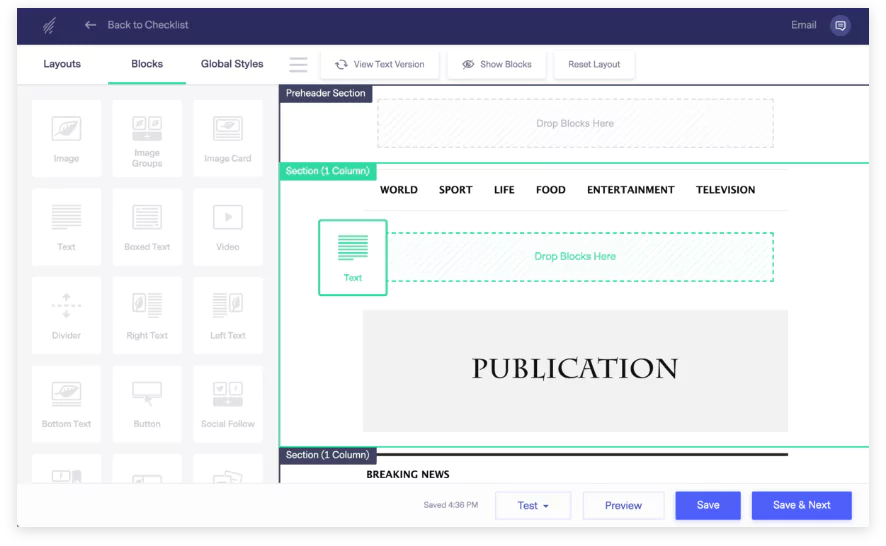
We also have a text-based option for more direct outreach (perfect for sales emails), along with HTML if customization and coding are more your style.
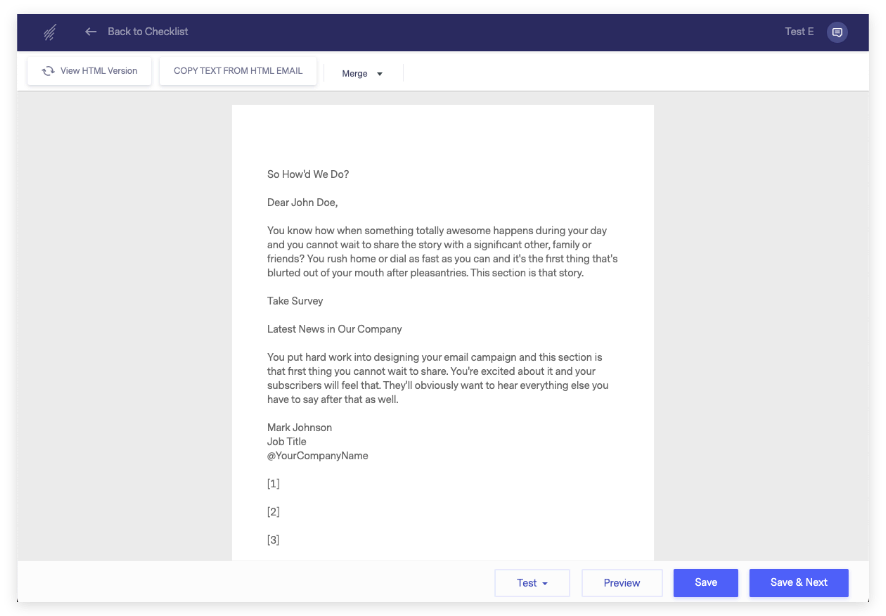
Mobile optimization was once something that was merely nice to have, Now, it’s a necessity. The best email marketing service providers have mobile optimization built-in. In fact, every email sent using Benchmark Email is responsive for desktop and mobile, meaning that no matter what device your email recipients are viewing your email from, it will look great and the way it’s supposed to.
Photo Editing

Unless you’re a graphic designer, getting your images to look pristine in your email marketing isn’t always easy.
A nice photo editing tool, like the one offered in Benchmark Email’s builder, makes it simple to re-size, crop, and even add filters for images that shine in the inbox.
Inbox Preview

If you’re a bit more advanced, you may know which email clients are the most popular among your subscriber list.
Benchmark Email offers an inbox checker, powered by the email marketing software geniuses at Litmus. With the inbox checker, you can preview your email in all of the most popular email clients before you send. This ensures that your email design looks perfect, whether your subscribers are reading your email in their Office 365 inbox on desktop, or scroll through in Apple Mail on their iPhone.
Free Email Templates

Creating HTML email templates from scratch can be a chore - after all, email marketing is rarely the only task on your to-do list.
Access to free email templates gives you a head start with email design.
We provide various email templates across a variety of industries, like travel, sports, education, medical and more. We also provide special promo templates. Whatever you may need you can easily find to make your email outreach smooth and simple.
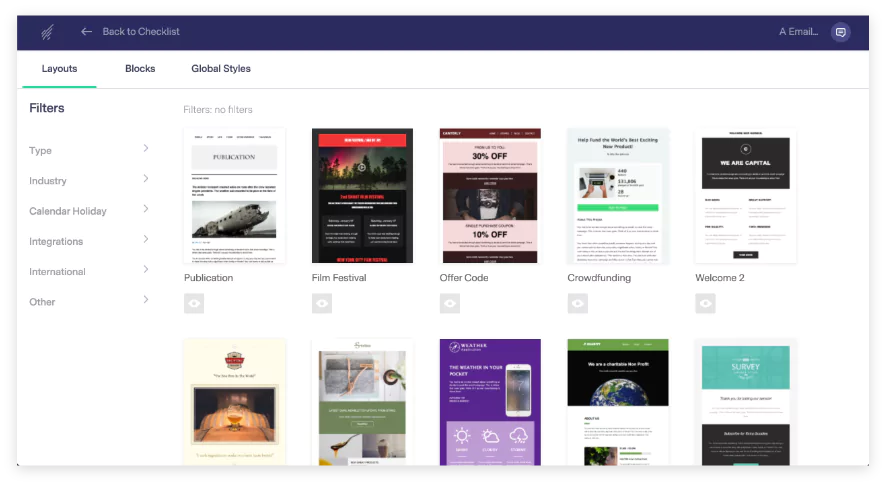
RSS Emails

Creating blog content goes hand-in-hand with a solid email marketing strategy.
But, who has time to broadcast your blog content every week or month on top of the other emails and items you have to get done? RSS emails allow you to automatically send an email to your subscribers every time you update your blog or any other RSS feed, getting your more mileage out of your valuable blog content.
Lead Generation

One of the biggest contributors to an effective email strategy is generating leads and email subscribers - you know, future customers.
The way you do this is by creating landing pages and website forms that you can add to your site.
Landing pages help you direct site visitors to a specific page, one that typically offers some sort of promotion, be it a webinar or a piece of content. You’ll want to include a form on this page so you can easily track new leads and add them to your email list.
You can also add embedded forms or pop-ups on website pages that get a lot of traffic. Not every email tool out there offers these kinds of features, but if you know you’ll want an easy way to generate leads on your website, then you’ll want to go with one that does.
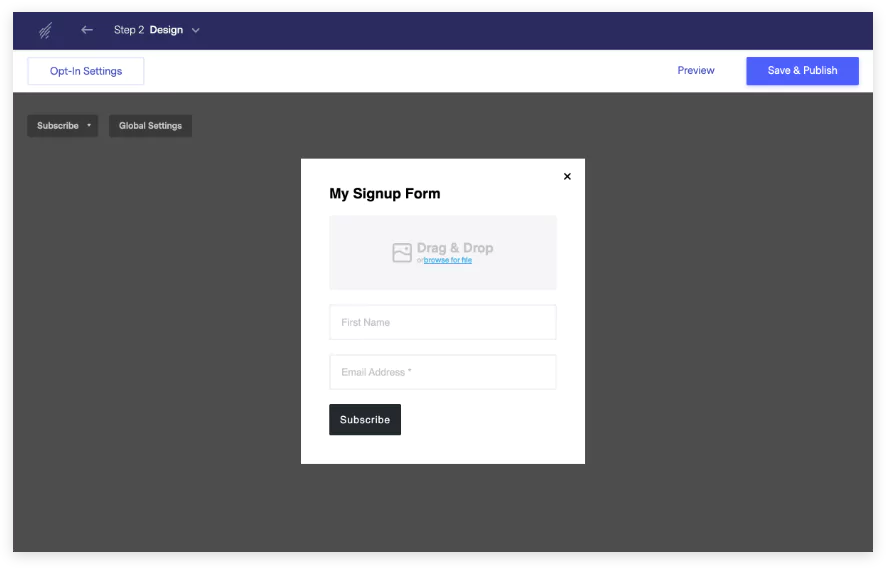
Email Drip Campaigns

These days, selling isn’t all about being pushy and aggressive.
Now, customers want to be educated before making a decision, and building trust is an essential part of that process. This is why email drip campaigns are such a great solution for soft selling.
If you’re actively generating leads and email subscribers on your site (and you should be!) then you’ll want to also send those leads personalized campaigns based on certain qualifying factors, like demographics, region, industry, etc. You’ll want these emails to be sent out in a steady stream so they’ll provide them with the right resources without overwhelming them. Over time, you’ll be able to stay top of mind with these leads, build trust, and move them down the funnel closer to making a purchase decision.
Marketing Automation

This is a perfect segue into marketing automation.
Marketing automation goes beyond email drip campaigns and triggers emails not just on a timeline, but by user behavior.
So, if leads visit a particular page on your website, purchase a product, or subscribe to an email list, you can set triggers that deploy automated campaigns that correspond with those actions. It offers another layer of personalized outreach, and if that’s something that interests you, you’ll want an email marketing software that comes with marketing automation.
A/B Testing

Most, if not all, email marketing tools come with an A/B testing functionality that allows you to test various components of your emails, like subject lines, CTAs, or send times.
By testing different options of each of these components and sending them to different groups of recipients, you can determine which approach yields the best return based on performance metrics from each group.
Here are some email components you should consider A/B testing:
- Email subject line
- CTA language
- Email send time
- Email send day
- Preview text
- Email copy
- Email format (HTML vs. text)
Reporting

We never advise sending emails without checking in to see how they performed. This is why our email marketing tool offers a robust reporting dashboard for our users to tap into.
Understanding how your subscribers interact with your campaigns will allow you to get better and better at not only sending emails but sending emails your subscribers can’t wait to open. Our tool tracks email opens, links clicked, and recipient interaction. We also are able to capture your bounce rate and unsubscribe rate per email so you know which are making it to the inbox, and which aren’t landing with subscribers.
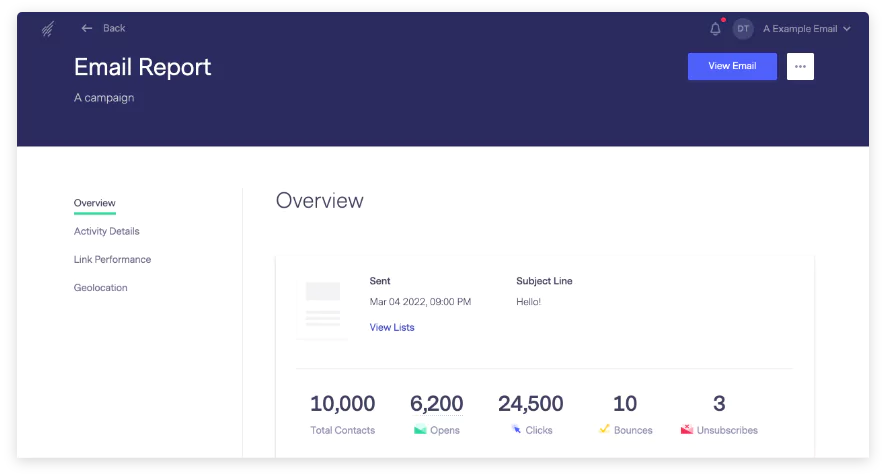
There should be a lot of thought, research, and time put into selecting an email marketing software that provides your team with what it needs to thrive. The selection process shouldn’t be one you breeze through, rather you shouldn’t leave any stone unturned. We hope this guide will help you along the way, and if you’d like to try Benchmark Email at no cost, sign up for our free plan today!
